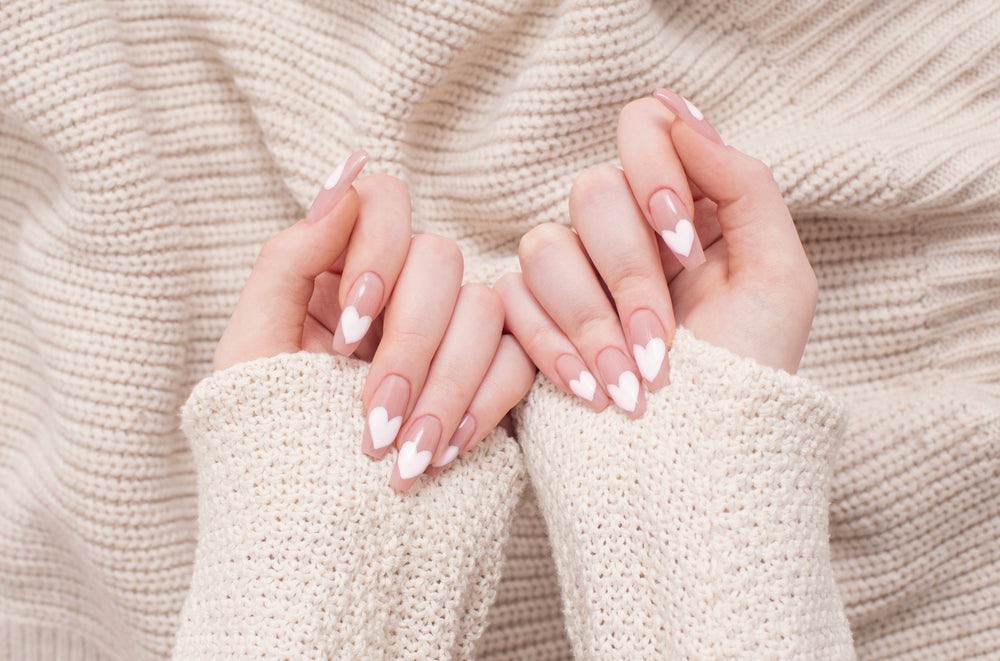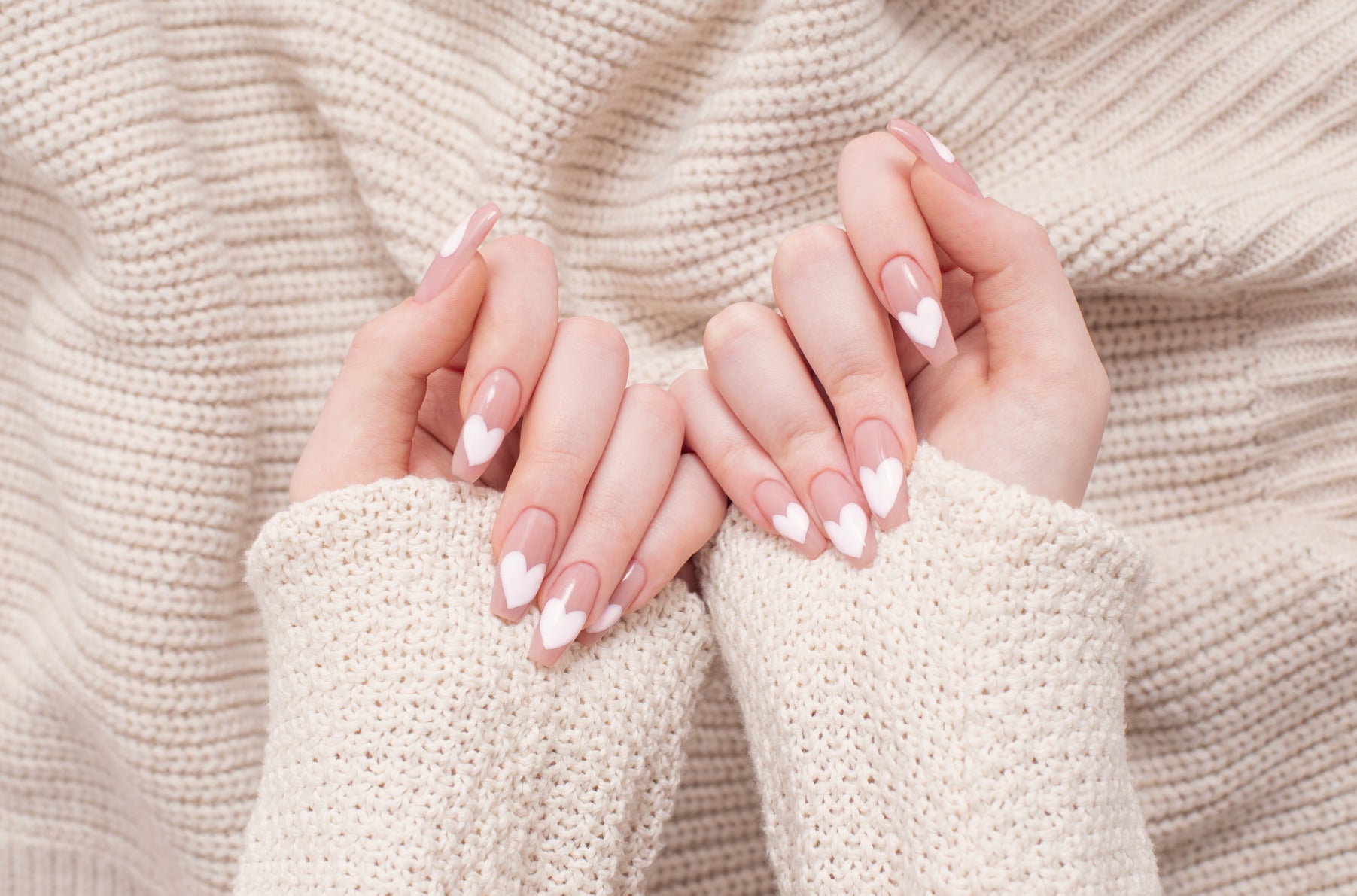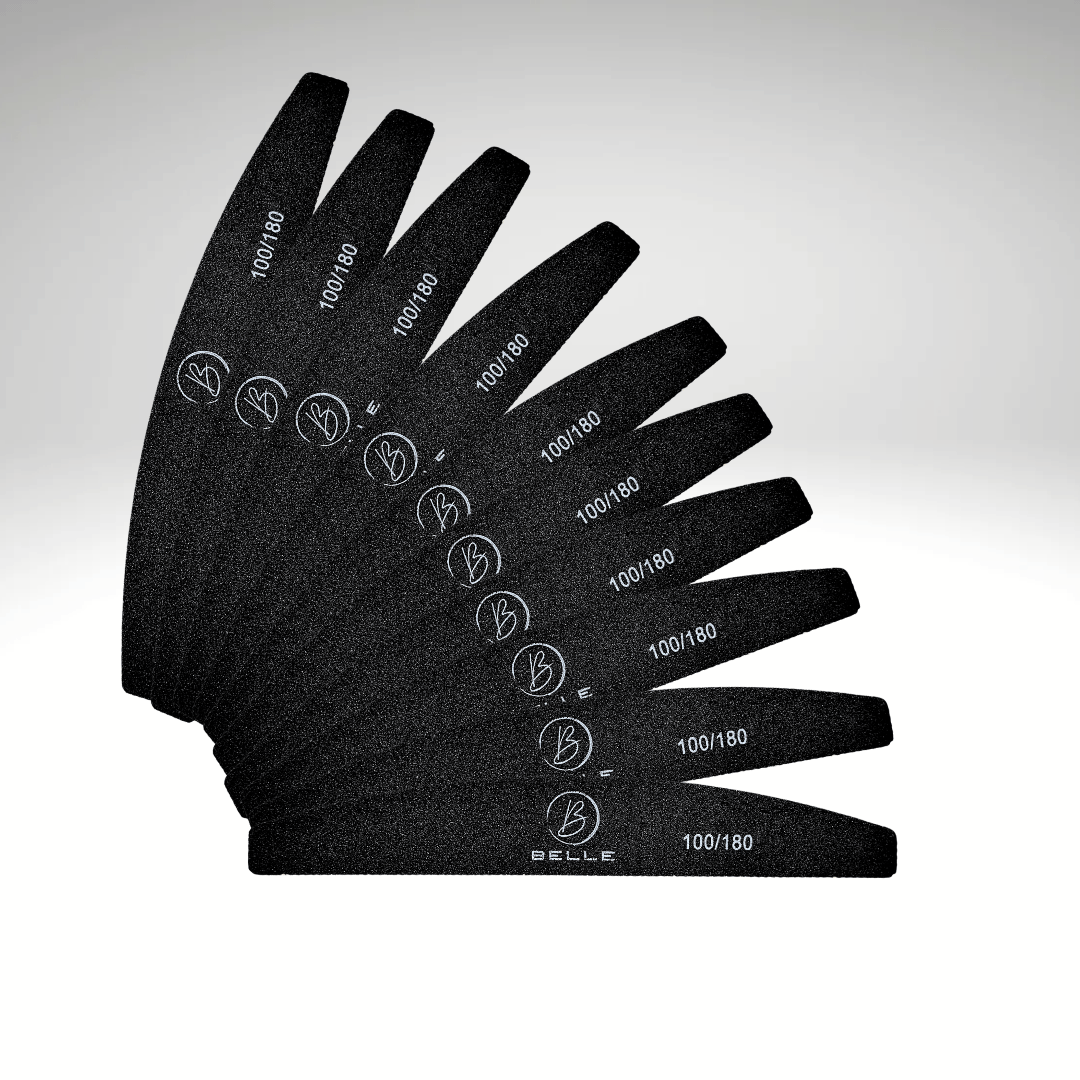How Long Should Gel Polish Really Last?
Gel polish is a game-changer in the nail industry. It offers a glossy finish, a wide range of vibrant colours, and most importantly, impressive longevity.
But how long should gel polish last?
Typically, a well-applied gel polish can last between 2-3 weeks without chipping or peeling. However, this lifespan isn't guaranteed. It can be influenced by several factors, from the quality of the products used to the nail preparation process.
This article aims to be your comprehensive guide on gel polish longevity. We'll delve into the intricacies of gel polish, exploring the factors that affect its durability.
We'll also provide practical tips and step-by-step guidance on how to apply and maintain gel polish for optimal duration. Whether you're an aspiring nail technician or a nail care enthusiast, this guide will help you master the art of gel polish application and maintenance.
So, let's embark on this journey to understand gel polish better and enhance your nail care techniques. By the end of this guide, you'll be well-equipped to confidently perform various nail procedures and ensure your gel polish lasts for as long as possible.
Understanding Gel Polish Longevity
Gel polish longevity is a topic of great interest to both nail technicians and clients. Achieving the desired lifespan of gel polish requires understanding different contributing factors. Factors such as nail preparation, quality of the products, and application techniques play essential roles.
Let's explore the main aspects that influence how long gel polish lasts:
- Nail health and preparation are vital for a good foundation.
- The quality of the products directly impacts the wear time.
- Expert application techniques ensure proper adherence.
- Environmental factors, including water exposure, affect lifespan.
- Daily habits and aftercare preserve the polish's integrity.
By understanding these factors, you can enhance the durability of gel nail polish. Each element plays a crucial role in achieving the best outcome. Striving for excellence in each step is key.
Whether you're applying gel polish at a salon or home, informed choices make a difference. Know what impacts your polish and act to ensure long-lasting results. Continuous learning and adaptation of new techniques and products can further increase polish life.
The Basics of Gel polish
Gel polish is distinct from regular nail varnish. It is a type of lacquer that hardens under UV or LED light. This hardening process gives gel nail polish its enduring quality and unique finish.
The chemistry behind gel polish involves polymers that form a durable coating. It's important to use a base coat with gel polish. The base coat helps the gel polish adhere better to the nail plate.
Choosing the right gel polish brand can also affect results. Some brands offer superior quality that resists chipping longer. A good choice sets you up for a successful, long-lasting gel manicure experience.
Typical Lifespan of Gel Polish
A well-executed gel manicure can last for about two to three weeks. This typical lifespan, however, depends on proper application and maintenance. When executed skilfully, gel polish resists chips, maintaining its shine and colour.
Although two to three weeks is the standard, some factors can decrease this duration. Harsh chemicals, water exposure, and rough handling can reduce wear time. Protecting your nails can help maximise the lifespan.
Clients often ask about the difference between salon-applied and at-home gel manicures. Professional applications usually last longer due to skill and product quality. Nevertheless, with the right techniques, at-home manicures can also achieve remarkable durability.
Factors That Affect Gel Polish Longevity
Understanding what affects gel polish longevity is crucial for ensuring a lasting manicure. Multiple elements come into play, influencing how long your gel polish remains intact and vibrant.
Proper nail preparation is a critical factor impacting durability. Healthy, well-prepared nails provide a solid foundation for the polish to stick to, reducing the likelihood of early lifting or chipping.
Additionally, using quality products ensures better results. The formulation of the gel polish and supporting products like base and top coats can significantly influence the lifespan of the manicure.
Application techniques are also vital. Even coats, proper curing, and edge sealing all contribute to how well the polish holds up over time.
Environmental influences, such as exposure to water or harsh chemicals, can degrade the polish faster. Consequently, practising protective habits plays a significant role in longevity.
Not least, individual nail health can dictate how well gel polish performs. Brittle or damaged nails may not support the polish as effectively as healthy ones.
Here's a brief overview of key factors:
- Nail preparation and health
- Product quality
- Application techniques
- Environmental factors
- Individual nail health
Nail Preparation and Health
Nail preparation sets the stage for a lasting gel manicure. The process involves cleaning, shaping, and buffing nails to ensure a smooth surface. Removing oils and moisture from the nail plate is essential, as they can prevent the polish from adhering properly.
Using a nail dehydrator or primer can help achieve the best adhesion. These products prepare the nail surface by removing excess moisture and oils, creating an optimal base for gel application.
The health of the nails themselves is equally important. Nails should be healthy and strong to support the gel polish. Regular care, including moisturising and proper nutrition, can enhance nail health.
Quality of Gel Polish Products
The quality of the gel polish products you use can significantly affect the longevity of the manicure. Not all gel polishes are created equal, and choosing reputable brands with proven formulas can make a big difference.
High-quality gels are formulated to provide a durable and flexible finish. They resist chipping and maintain their shine longer than lower-quality alternatives. Investing in good base and top coats is also crucial, as they serve to protect and seal the colour.
Selecting products that complement each other leads to better performance. Sometimes, problems arise when combining different brands, as formulations vary. Opt for a cohesive set of products for the best results in gel polish longevity.
Step-by-Step Guide to Applying Gel Polish for Maximum Longevity
Achieving a long-lasting gel manicure requires precision and patience. The application process involves several critical steps. Each step plays a part in ensuring the durability of the gel polish.
Nail Preparation: The Key to Adhesion
Begin with a clean slate. Remove any old polish and thoroughly cleanse the nails. Shape the nails and gently buff the surface. This creates a smooth canvas for the gel polish.
Next, apply a nail dehydrator to remove oils and moisture. This step is essential for improving adhesion and minimising lifting. It primes the nail for better bonding with the gel products.
Application Techniques for Durability
Applying thin, even layers is crucial for durability. Begin with a base coat, ensuring you cover the entire nail surface. Seal the free edge to prevent future lifting.
When applying the colour, use thin coats as well, allowing each to dry fully under the lamp. Thick layers can lead to bubbling or premature chipping. Ensure to seal the edges with every layer.
Finish with a high-quality top coat. This layer should also be applied thinly and evenly. It protects the colour and adds a beautiful shine. Again, remember to seal the free edge thoroughly.
Curing: LED vs. UV Lamps
Proper curing is vital for strong adhesion. LED and UV lamps serve this purpose, but they differ in speed and wavelength.
LED lamps cure gel polish faster than UV lamps. They're energy-efficient and safer with less exposure to ultraviolet light. They are ideal for quick services and are compatible with many gel brands.
UV lamps, on the other hand, take longer to cure the polish. They work with a wider range of gel products, including some that LED lamps cannot cure. This makes them versatile, though they require more time per layer.
When using either lamp, always follow the manufacturer's curing time recommendations. Consistent curing ensures the polish hardens correctly, enhancing its longevity. Missteps here could weaken the manicure, causing peeling or chips.
Maintenance Tips to Prolong the Lifespan of Your Gel Polish
Maintaining gel polish involves straightforward yet essential habits. By adopting these practices, you can keep your manicure looking pristine. It also aids in preventing premature deterioration and damage.
Daily Habits for Gel Polish Care
Firstly, reduce contact with water for the first few hours following your manicure. Water can undermine the bond. Wear gloves for domestic tasks to circumvent harsh chemicals and moisture.
Moisturise your cuticles and nails with nourishing oils. This averts brittleness and supports nail health. Healthy nails offer a sturdy foundation for your gel polish.
Take note of how you utilise your nails in daily tasks. Refrain from using them as tools to lever open items or scrape surfaces. This lessens the chance of chips and lifting.
Touch-Up Techniques and When to Seek Professional Assistance
Minor chips and peels can typically be repaired at home. Gently buff the affected area to smooth edges. Apply a matching varnish to cover the spot, and seal it with a top coat.
For more significant damage, consider professional help. If extensive peeling or lifting occurs, a technician can safely and effectively restore your manicure. This ensures the integrity of the nail and varnish is maintained.
Additionally, regular visits to a nail salon for maintenance helps. Technicians can assess nail health and apply corrective measures. This proactive step extends the lifespan of your gel polish even further.
Implementing these maintenance tips ensures lasting beauty and protection. Adhering to good habits also supports the health of your nails.
Troubleshooting Common Gel Polish Issues
Even with careful application, gel nail polish problems can occur. Knowing how to address these issues is crucial. Quick and effective solutions can save your manicure.
Addressing Lifting, Peeling, and Chipping
Lifting usually starts at the nail's edge. This can result from improper sealing during application. To fix it, file and smooth the lifted area. Apply a layer of top coat for added protection.
Peeling often results from exposure to moisture or improper curing. Ensure nails are kept dry, and consider re-curing under a lamp. If peeling persists, a full reapplication may be necessary.
Chipping might occur due to impact or the use of a nail. Use a small amount of matching gel polish to cover chips. Finishing with a top coat will help in achieving a seamless repair.
Safe Removal Techniques to Preserve Nail Health
Removing gel polish properly is essential to prevent damage to the nail. Begin by gently buffing the shiny top coat. Use acetone-soaked cotton balls or pads on your nails. Wrap each finger in aluminium foil to lock in moisture.
Allow the acetone to sit for 10-15 minutes. Then, gently scrape the softened polish with a cuticle pusher. Avoid forceful scraping, as it can damage the nail. This method ensures the natural nail remains intact and healthy.
Enhancing Your Skills as an Aspiring Nail Technician
Becoming a skilled nail technician involves more than just mastering basic techniques. It's about constantly honing your craft and expanding your knowledge. Keeping a keen eye on new methods and trends will set you apart in this competitive industry.
The Importance of Continuous Education and Practice
Continuous education is vital for growth in nail artistry. New products and techniques emerge regularly, offering opportunities to enhance skills. Attending workshops and training sessions helps you stay current and proficient.
Practice is equally crucial in perfecting your craft. Routine practice allows you to experiment and refine application techniques. Being open to learning from peers and mentors can offer new insights and improve your expertise.
Regular practice also builds confidence, translating into better service delivery. When you're confident, clients will notice your professionalism and feel at ease. A commitment to learning ensures you're always improving your abilities.
Staying Updated with Gel Polish Trends and Innovations
Being aware of gel polish trends keeps your services fresh and desirable. Trends can influence the types of designs clients seek. Following industry leaders on social media can provide valuable inspiration.
Innovations in products also play a crucial role in service quality. Knowledge of new formulations and tools can improve application and durability. Investing in top-quality, innovative products can enhance client satisfaction.
Networking with other technicians can also keep you abreast of changes and developments. Sharing experiences and ideas is beneficial for everyone involved. Staying informed allows you to offer services that clients are eager to try.
Conclusion: Establishing Realistic Expectations and Delivering Quality Service
Gel polish durability depends on various elements like application prowess, product quality, and aftercare. Enlighten clients to establish realistic expectations about gel polish wear. Aspire to excel by staying informed and continuously enhancing your skill to deliver outstanding service. This dedication ensures your clients leave satisfied and come back for subsequent appointments.









